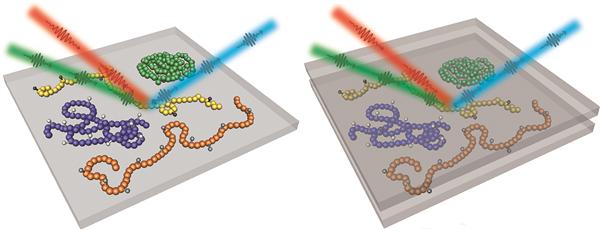Studying Polymer Surfaces and Interfaces with Sum Frequency Generation Vibrational Spectroscopy
作者:Xiaolin Lu*, Chi Zhang, Nathan Ulrich, Minyu Xiao, Yong-Hao Ma, and Zhan Chen*
關(guān)鍵字:Polymer surfaces and interfaces, sum frequency generation vibrational spectroscopy
論文來(lái)源:期刊
具體來(lái)源:Anal. Chem. 2017, 89, 466–489, Review Article
發(fā)表時(shí)間:2017年

Usually a surface or an interface is well-defined with little diffusion from one side of the surface or interface to the other, with the length scale being on the order of one to several molecules. The molecular interactions on a surface or at an interface are thus dominated by short-range interactions. Various properties, such as wettability, reactivity, biocompatibility, adhesion, friction, etc., of a surface or interface are determined by the surface/interfacial structures at the molecular level (or the arrangement of the molecules). To improve the properties of a surface/interface, it is first necessary to characterize the molecular structures on the surface/interface and then determine the structure?function relationships of the surface/interface. This Review will summarize the recent progress in sum frequency generation (SFG) vibrational spectroscopic studies on molecular structures of polymer surfaces and interfaces. Many excellent results have been reported in a large number of articles on such topics; it is impossible to cover all these studies in this Review. Here, we will first introduce the theoretical background of the SFG vibrational spectroscopy. We will then give a selective and systematic summary on the recent SFG studies on polymer surfaces in air, surface restructuring in water, and the buried polymer/solid interfaces such as polymer/metal, polymer/oxide, and polymer/polymer interfaces. SFG can provide unique results on polymer surfaces/interfaces such as molecular level structures and in situ capability of probing buried polymer/liquid and polymer/solid interfaces, as well as intrinsic submonolayer surface specificity. We will focus on such unique aspects of the SFG studies especially on buried polymer interfaces reported in the last three years in this Review. Such studies developed SFG into a powerful spectroscopic tool for analytical chemistry.
http://pubs.acs.org/doi/abs/10.1021/acs.analchem.6b04320